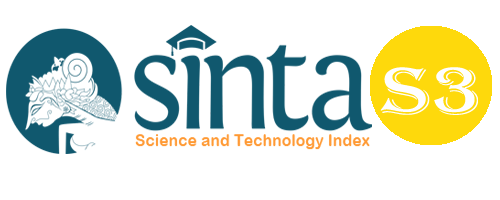Adaptation and Interaction of the Elderly in Glawan Village during the Covid-19 Pandemic and Post-Covid-19 Pandemic
Abstract
Glawan Village, Pabelan District, Semarang Regency is a village with a large elderly population. Glawan Village is located in Pabelan District, Semarang Regency. Most of the residents of Glawan Village work as farmers. The number of households in Glawan Village is 665, with a total population of 1,921 people, consisting of 960 males and 961 females. The education level of the residents of Glawan Village is mostly low, with only 570 people graduating from elementary school. Meanwhile, the main sources of livelihood are farming with 156 people and freelance labor with 348 people. In terms of the age of the population in Glawan Village above 60 years, there are 377 people, meaning that 20% of the population in Glawan Village are considered elderly. During the Covid-19 pandemic in 2020-2021, the elderly in Glawan Village continued their activities as usual at home, even without wearing masks, because they engaged in activities such as making salted fish baskets and farming. From the results of post-Covid19 pandemic research, the elderly stated that their interactions with other elderly and neighbors were the same, but interactions with family members from outside the village were different. During the Covid-19 pandemic, if relatives or friends came to visit, they had to wear masks, but now, after the pandemic, masks are no longer necessary. One very different interaction was during Eid al-Fitr. For two years, they were unable to visit each other, but in 2022, they were able to visit again. For the elderly in Glawan Village, social interactions during the Covid-19 pandemic did not differ much from social interactions after the pandemic. The adaptation of the elderly during the Covid-19 pandemic was different because they had to receive guests while wearing masks, but after the pandemic, they no longer have to wear masks.
Keywords
Full Text:
PDFReferences
Abidin, Djainal. Modal Sosial dan Dinamika Usaha Mikro Kecil. Jurnal Sosiologi MASYARAKAT. Vol.15, No.1, Januari 2010 : 69-85.
Balady, Ashfin. 2018. “Aktualisasi Modal Sosialdalam Pemberdayaan Komunitas”. Skripsi. Jogjakarta: Fakultas Dakwah dan Komunikasi Universitas Islam Negeri Sunan Kalijaga.
Effendy, Jani. Peran Modal Sosial Sebagai Upaya Pengembangan UMKM Di Kota Merah Kota Ambon. Fakultas Ekonomi dan Bisnis. Universitas Pattimura. Vol.XII, No.2, Desember 2018 : 103-108.
Fashri, Fauzi. Pierre Bourdieu:Menyingkap Kuasa Simbol. Yogyakarta : Jalasutra.2014
Fathy, Rusydan. 2017. “Modal Sosial dan KetahananEkonomi Ojek Pangkalan Salemba”.Skripsi. Jakarta: Universitas Islam Negeri Syarif Hidayatullah.
Field, John. 2010. Modal Sosial. Terjemahan Nurhadi. Bantul: Kreasi Wacana.
Fathy, Rusydan. 2017. “Modal Sosial dan KetahananEkonomi Ojek Pangkalan Salemba”.Skripsi. Jakarta: Universitas Islam Negeri Syarif Hidayatullah.
Grootaert, Christian. 1998, “Social Capital: The Missing Link? The World Bank Social Development Family, Enviromentally, and Socially Sustainable Development Network, Social Capital Initiative.” Working Paper No. 3.
Haridison, Anyualatha. 2013. “Modal Sosial dalam Pembangunan”. JISPAR FISIP Universitas Palangka Raya No 4.
Jaya, I Made Laut Mertha. Metode Penelitian Kuantitatif dan Kualitatif.Yogyakarta : Quadrant. 2020
DOI: https://doi.org/10.33258/birci.v6i1.7502
Article Metrics
Abstract view : 0 timesPDF - 1 times
Refbacks
- There are currently no refbacks.

This work is licensed under a Creative Commons Attribution-ShareAlike 4.0 International License.

This work is licensed under a Creative Commons Attribution-ShareAlike 4.0 International License.

_.gif)

















_.gif)



